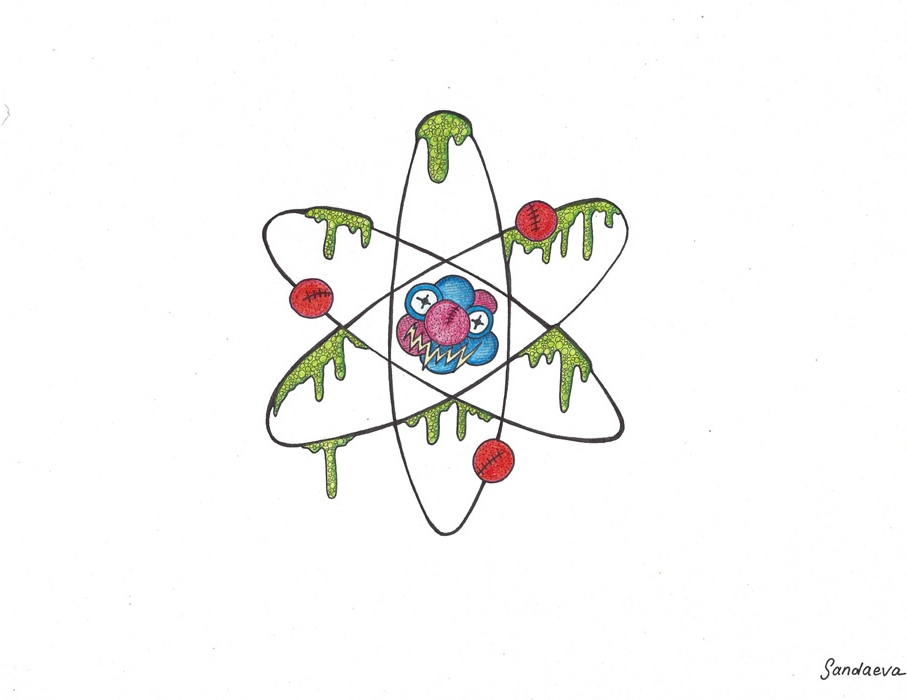More haunting than any ghoul is the occurrence of entanglement, or nonlocality. Entanglement occurs when particles, also known as various small ‘fields,’ are linked. These fields include electrons, photons, atoms, and even molecules, which share a common history that intertwines their futures. Measuring or changing the state of an entangled particle will modify the state of its linked particle.
To explain this phenomenon with a Halloween twist, McGill physics professors broke down the theory of entanglement, using the metaphor of trick-or-treating. The ‘quantum candy’ represents the particles, or fields, and the ‘colour’ of the candies are entangled.
In this case, because of the way candy is entangled by colour, both trick-or-treaters had to end up with the same colour of candies.
Assistant Professor Bill Coish of the Department of Physics at McGill illustrated this example in an email to The McGill Tribune.
“Minerva and Ada get special quantum candy from a […] candy bowl—one candy each,” Coish said. “The candies are either both red or both green. The strange thing about these quantum candies is that the colour is not predetermined; you can actually do a check […] to show that they don’t have any special colour before Ada and Minerva look into their loot bags. It’s only after they look into their bags that they see if they [both] have [either] a red candy or [green] candy.”
Associate Professor Michael Hilke, also in the Department of Physics at McGill, explains the mystifying concept using the analogy of two quantum ghosts who are entangled by their arms and mouths, one haunting Montreal and the other haunting Toronto.
Using ghost cameras, Hilke photographs the Montreal ghost’s arm and his daughter photographs the Toronto ghost’s mouth at the exact same time. If he photographs the Montreal ghost’s left arm, the Toronto ghost’s mouth will always be captured open. Every time Hilke chooses to photograph the right arm however, the Toronto ghost has a closed mouth. Choosing which arm to measure dictates what the corresponding position of the mouth will be, because of how the features are entangled.
The strength of measurements, or in this analogy, ‘photo quality’ determines the strength of the outcome of the entangled characteristic. So, should the lighting be insufficient to obtain a good photo, and only a blurry indistinguishable arm of the Montreal ghost is captured, Hilke’s daughter will capture a blurry mouth on the Toronto ghost.
It may seem as though one quantum ghost or candy sends a quick secret message instructing the other’s outcome, however, distance does not affect entanglement—so the message doesn’t actually exist.
“The thing is, forces and information can only travel as fast as the speed of light,” Coish wrote. “If [in the candy example] Ada and Minerva are far enough away from each other when they look in their loot bags and they look at roughly the same time, they can rule out the possibility that a signal or force could have travelled the distance between them in that time.”
Coish clarified that experiments have already shown the lack of a signal between entangled fields; experiments using photons, atoms, and electron spins in diamonds have been used to measure said connection.
Hilke explained a scenario in which two particles are entangled, where one remains on earth and the other is sent to another planet. By observing the state of the particle on earth, the extraterrestrial particle’s state is simultaneously modified.
When asked about the quantum realm’s philosophical impact, Hilke’s response may keep some readers up at night. Nothing at the particle level is deterministic; our conceptualization shouldn’t be of a deterministic world, but instead a probabilistic one, in which nothing can be predetermined.








